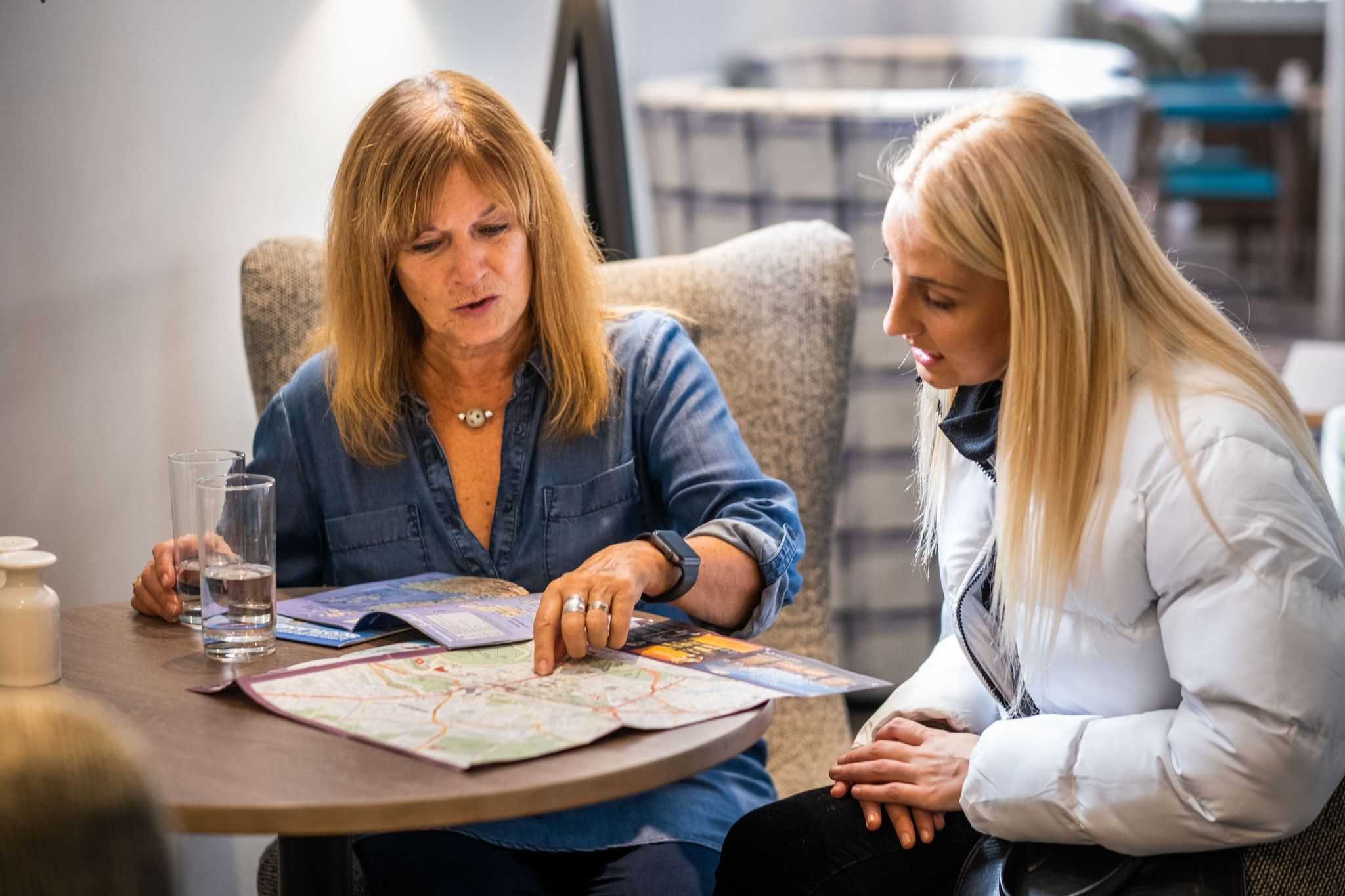We know that first-time visitors and those from further afield will consult more sources of information to help them plan and book, whereas regular visitors and those closer to home don’t need as much information.
But where do they tend to get their information?
The main categories include:
- personal recommendations (53%) such as from family and friends, or from a personal travel advisor
- digital sources (42%) such as social media, websites, or online content
- film, TV or books featuring Scotland (19%) such as Outlander or The Outrun
- printed information (15%) such as guidebooks, newspapers and magazines
How to reach these customers
Personal recommendations
Create opportunities for your customers to take photography and video that can record authentic moments for them and inspire their friends and family. Consider the interior of your business – is there anywhere that would provide an interesting background, such as a reception room or bar, or is there something eye-catching on the wall such as an image of a nearby landscape? If not, can you create something especially for a background? Think about opportunities to include a subtle brand of your business name or logo.
Take photographs for customers – if you run an experience, such as active and outdoor, is there an opportunity to take photographs for customers? This could be as simple as a tour guide setting aside time to take photographs of the group if requested, or your business taking photographs of people during the experience and offering them for sale at the end. (Please check and include this in your information packs and terms and conditions.)
Although they may not be personal recommendations, it can also help to ensure you have several positive reviews about your business. Encourage your customers to leave a review – make it easy for them to know where to leave this review, perhaps including this information on a follow up email or on their final bill or receipt.
If they do take the time to leave a review, remember to respond politely to all reviews and take any feedback onboard.
Check out our tips on customer feedback.
Digital sources
Think about where your business is listed online. You should have your own website, but can you also consider setting up a listing on partner websites including visitscotland.com, your DMO, your sector website, and Google? You may also want to consider working with a travel distribution partner, such as a tour operator or OTA.
Having a listing will not work unless you keep it up-to-date and engaging. Think about refreshing images whenever possible, ensure it covers the most unique elements of your products, and make sure any copy is written in simple language and proofed for any spelling mistakes and grammatical errors.
Film, TV or books featuring Scotland
Does your business or your local area have any connections to film, TV or books? If you’re an accommodation provider, consider listing nearby locations with connections for a day trip, or link to some of the assets available on visitscotland.com.
This may also be an opportunity to mention historical connections that have inspired more well-known stories.
Find out more about sources of inspiration
Check out our video on all of the ways a customer might find your business.
